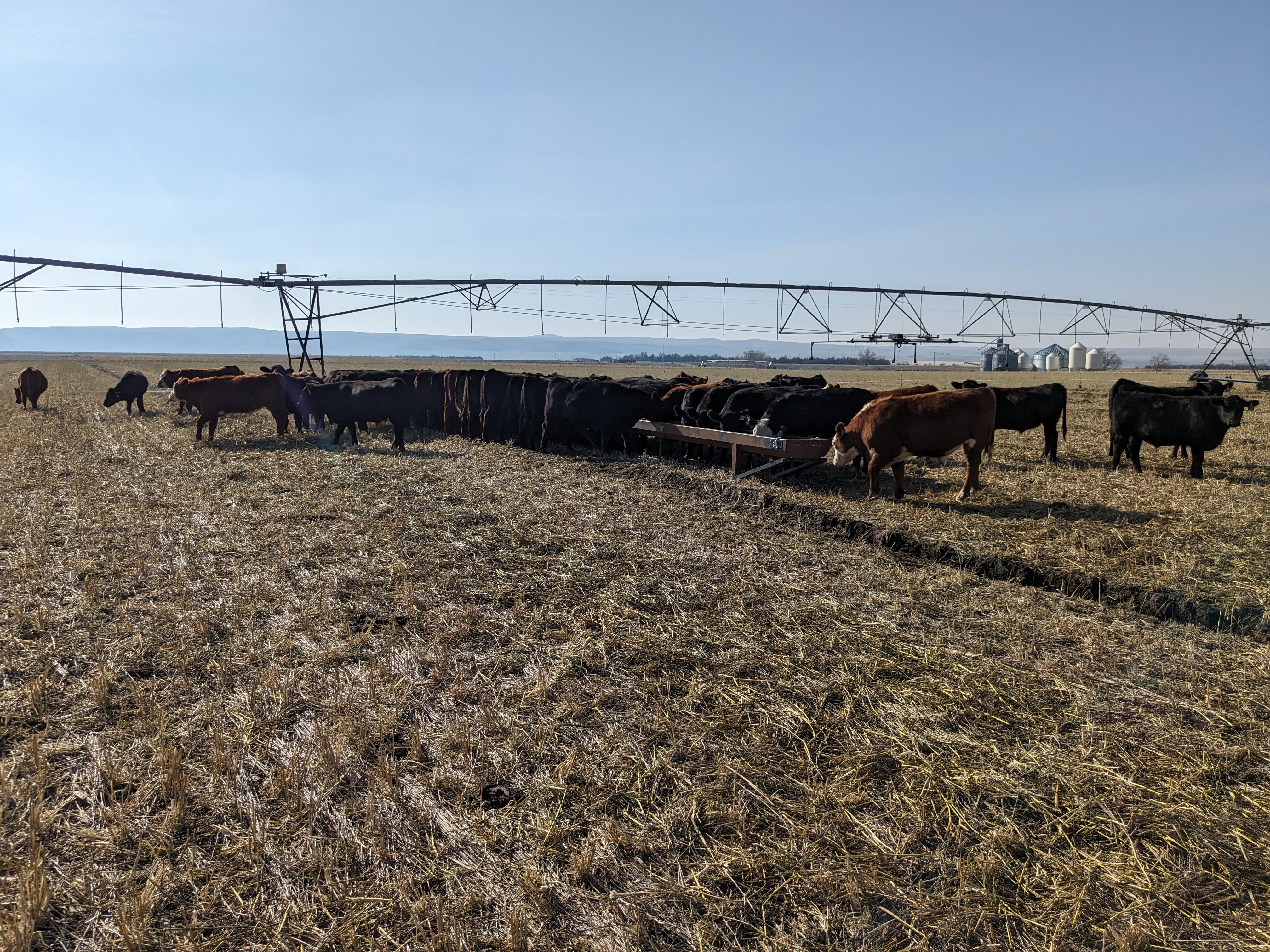Moving Custom Feed Bunks with an Irrigation Rig
Wednesday, January 17, 2024

This summer and fall, Dakota Lakes farm manager, Sam Ireland, consulting agroecologist, Dr. Cody Zilverberg, and research manager, Gary Waack, put their heads together to find a more efficient way to feed grain to the livestock herd to supplement their cover crop swath grazing system.
The herd, consisting of 12 Aberdeen Angus steers belonging to Dakota Lakes plus 67 steers that were on loan from Lowry rancher Luke Perman, was given access to a corn field and an adjacent cover crop field (oats and triticale) that had been hayed and swathed in late summer and then allowed to regrow. The animals weren't given access to the entire cover crop field all at once, though. Rather, their progress down the field was controlled by an electric fence suspended from one of the farm's irrigation rigs. Each day, the rig traveled 60 feet, giving the animals access to a fresh patch of the cover crop ground.
This year's addition to the system came in the form of several feed bunks that were modified so they could be attached to the irrigation rig and move along with it.
Waack built skids for the bunks so they could slide easily along the ground and attached plates and chains to hook them together and attach them to the irrigator.
Zilverberg noted that while the design worked, there were some issues that they might need to address, as the U-bolts that attached the bunks together had gotten bent and there are some stability issues.
"The bunks are a little tippy when turning," Zilverberg said.
But overall the team is happy with the system as it eliminated the need to move the bunks manually. In addition, moving the bunks reduces the risk of there being too much compaction in any given location.
Zilverberg says they were concerned that the electric fence wouldn't hold the herd in the field, but those concerns were alleviated by good preparation by Perman.
"Luke's animals were already trained to hotwire," he says. "So thankfully we didn't have any problems."
You can watch a video showing the feed bunks in action here.
Categories: News